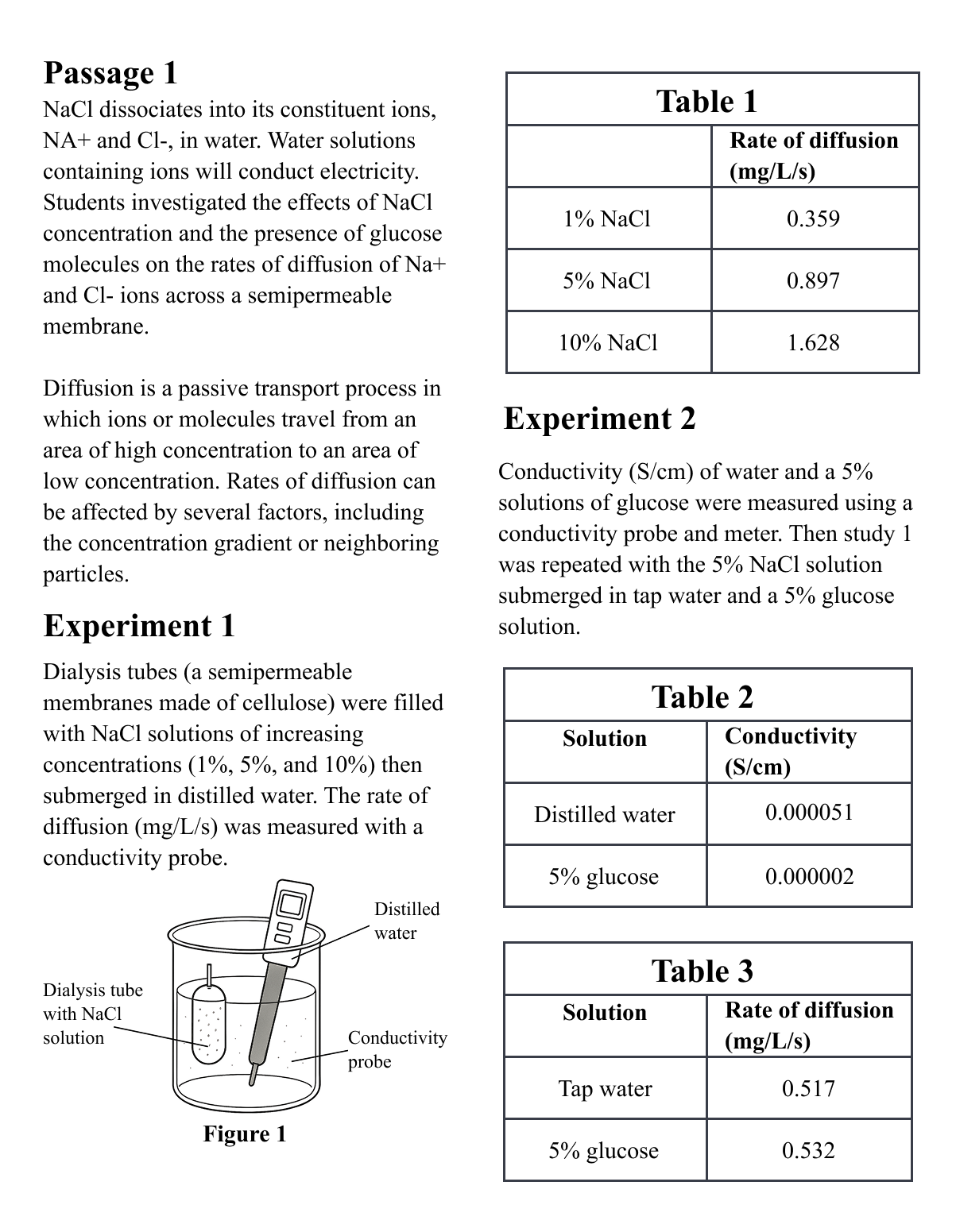The most common type of passage in the ACT Science test is research summaries, making up about 45–60% of passages. These passages revolve around reading descriptions and results of experiments. Analyzing and interpreting visual data, like graphs or tables, will be important. They will also focus on how the experiments are conducted. Here is an example of one of these kinds of passages:

To do well on these passages, you have to be able to answer questions that focus on the design of the experiment and on interpreting its results. You can read more about these types of questions in their chapters of this textbook.
Some passages are difficult to understand and only require you to find answers by pointing at them or by drawing comparisons in the passage. In many cases you are not expected to understand these topics in their entirety. However, research summary passages are often different.
One of the things that stands out about this type of passage is that you are expected to understand the purpose of the research and the reasons for certain steps in the experiment. You should still skip reading the passage and begin with the questions, but you will have to dig a bit more to find the answers. The purpose of this is to test your understanding of the scientific method. The test evaluates your ability to form a hypothesis, to identify a control group and variables, and to draw a conclusion.
A hypothesis is an assumption based on what we understand about a scientific experiment we perform. The hypothesis is a possible outcome of the experiment. One possible hypothesis for the study in the sample passage could be that the rate of diffusion for solutions of NaCl would decrease in the presence of glucose molecules.
The independent variable is the variable that we choose to change within the experiment. An independent variable in the study described by the sample passage is the percent NaCl.
The dependent variable is the variable that changes in response to the independent variable. We don’t directly change the dependent variable! A dependent variable in the study described in the sample passage is the rate of diffusion.
The control group is the baseline group without any changes made to it. We compare every other test to the control group so that we can see how much our results change. A control group in the study from the sample passage is the trial with the distilled water.
The conclusion is the statement we make about the data we have gathered. It describes the results of our outcome and often either proves or disproves the assumption from our hypothesis. One conclusion that could be made for the study in the passage would be that the presence of glucose decreases the rate of diffusion of 5% NaCl solution